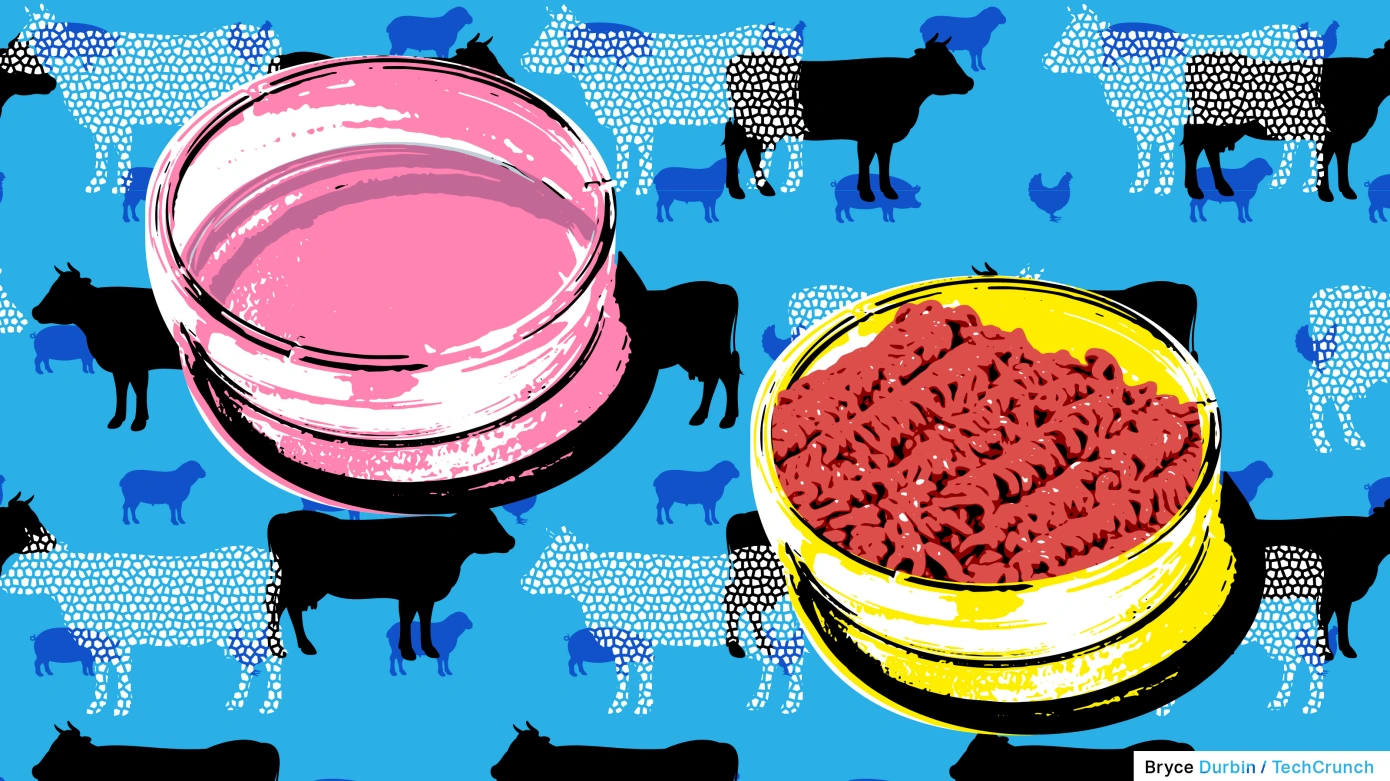Ethical, environmentally friendly, mass-produced meat might be nothing more than a pipe dream.
This article is from The Checkup, MIT Technology Review’s weekly biotech newsletter.
Would you eat lab-grown meat?
Plenty of companies have set out to generate meat products from muscle and fat cells cultured in vats—around 80 at the last count. The promise is huge. But whether these companies can deliver on that promise is another matter entirely.
It’s something that’s been on my mind the last couple of weeks, for a few reasons. At MIT Tech Review’s recent ClimateTech event, my colleague James Temple interviewed Pat Brown, CEO of Impossible Foods. The company makes plant-based meat alternatives that are designed to closely resemble the real thing—most famously its “bleeding” burger. When asked what he thought about “cell-based” meat, Brown responded: “I certainly don’t see them as a competitor.”

I’ve also been reading a series of papers published in the scientific journal Nature Food a couple of weeks ago, which explored the arguments for and against cultured meat, as it’s known, in more detail.
The other reason I’ve been thinking about meat alternatives is that the winter holidays are approaching, and as someone who doesn’t eat meat, it’s my job to come up with an alternative that everyone, including my fussy kids and meat-loving dad, will enjoy. Talk about impossible foods.
But back to cultured meat
There are lots of reasons why, on paper, meat grown in bioreactors is a brilliant idea. For a start, we’d be able to cut down on intensive animal farming, which can be brutal and inhumane. Rearing animals in cramped conditions can create the perfect conditions for diseases to spread, and even pass to humans.

And the use of antibiotics to avoid such disease outbreaks is also incredibly problematic. It is estimated that around 70% of the antibiotics we use to treat infections in people are also used in farm animals. And any microorganisms that become resistant to antibiotics as a result of this use can end up in crops, soil, rivers, and people, potentially causing untreatable and possibly fatal diseases. At least 1.2 million people died from antibiotic-resistant infections in 2019, for example.
The process of producing meat is also terrible for the environment
Animal agriculture is responsible for a significant chunk of our greenhouse-gas emissions. We use more than a third of our planet’s habitable land to farm animals—land that may have been carbon-consuming forest or woodland. The destruction of forests for agriculture can leave many species, lots of them endangered, without a home. This can decimate biodiversity.

The simple answer, of course, is to cut meat—and animal products in general—out of our diets. But while plant-based alternatives have taken off, they aren’t a palatable option for a lot of people. Studies from the US, Europe, and Australia suggest that even when people know about the environmental impact of meat, only a small minority are willing to give it up. Enter cultured meat—a cruelty-free and sustainable approach to providing animal-based meat products. At least, that’s the promise.
Unfortunately, it’s not that straightforward
For a start, growing animal cells so that they resemble a burger, steak, or nugget is by no means cheap. The first lab-grown burger cost around $330,000 to make in 2013. Prices have dropped since then, but not to the extent that they could compete with currently available fast food options. Using existing technologies, it would be impossible to create a competitively priced product, according to an analysis published last year.
Before any meat grown in bioreactors reaches our plates, it has to be approved by regulatory agencies. A couple of years ago, authorities in Singapore greenlighted a lab-made chicken nugget, made by California-based company Eat Just. But many believe that approval in other countries is a long way off.

Let’s say we overcome both of those hurdles and get a cheap cultured-meat product to market. Would anyone eat it? Personally, these products don’t appeal to me. I’ve avoided meat for most of my life and can’t stomach the idea of eating animal muscle fibers, even if they have been grown in a bioreactor. But then, perhaps people like me aren’t the target market. After all, lentils are a cheaper, healthier, and more sustainable option than even lab-grown meat. Mark Post, who led the development of the first cultured-meat burger, is quoted as saying: “Quite frankly, vegetarians should remain vegetarians, that’s better for the environment than cultured beef.”
It’s more about converting die-hard meat eaters
One problem is that many people who eat meat should probably be cutting down for the sake of their own health as well, and there’s no obvious reason cultured meat would be any healthier than the real deal. You could technically cut out the fat, but in doing so, you’d make it less meat-like. Which kind of defeats the purpose.
Another issue is simply that many people are unlikely to ever want to give up meat. A 2016 survey in the US found that around a third of people said that they would probably or definitely be willing to give up farmed meat for a lab-grown alternative. But a similar proportion said they wouldn’t. Many assumed that cultured meat would be less tasty, less appealing, and more expensive.
It’s too soon to draw conclusions about how tasty or not cultured meat will be, given that barely anyone has tried it. But maybe things will stay that way. I can’t imagine cultured turkey ending up on our festive dinner table any time soon.









